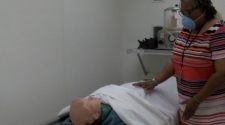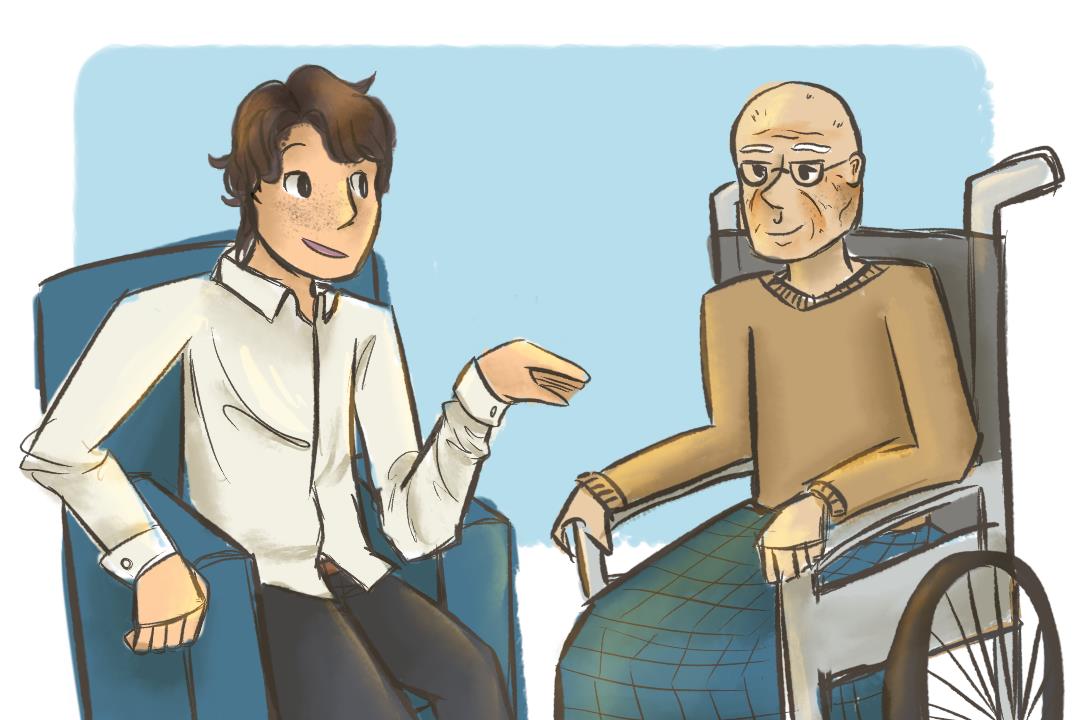Improving the ways in which we treat dementia can cause widespread benefits throughout the health care sector. FIONA TUNG/THE VARSITY
Dementia is taking a serious toll on Canada’s aging population: roughly 76,000 people are diagnosed with the condition every year. It is estimated that the number of Canadians living with dementia may even double over the next 20 years due to our growing senior demographic.
Diagnosing, treating, and managing dementia brings many challenges for both those affected by it and their caregivers. Fortunately, the rapid growth of technology in recent years has sparked innovation which help tackle these issues. But lacklustre awareness and slow implementation of these technologies have limited their outreach.
Time is of the essence in dementia research. The surge in innovation, coupled with our aging population, means that we need to quickly change the way we treat dementia.
What is dementia?
Dementia is a medical term that covers a variety of syndromes affecting the brain. It can be caused by conditions such as Alzheimer’s, Parkinson’s, and head trauma. Patients affected by dementia experience memory loss, difficulties with problem solving and, in some cases, severe changes in mood.
Treating dementia can come with many challenges. However, technology can play a huge role in mitigating some of these obstacles.
Dr. Arlene Astell, an Ontario Shores Research Chair in Community Management of Dementia at U of T’s Medical Sciences Department, recently co-authored a paper summarizing developments on the diagnosis, treatment, and management of dementia.
The paper highlighted the multifaceted uses of technology in treating a syndrome like dementia.
“Direct healthcare has very little to offer people once they have been diagnosed,” wrote Astell to The Varsity. While a range of medical interventions and services to support lifestyle management can be offered to patients with conditions such as diabetes and cancer, such is not the case with dementia.
“There are no disease-modifying therapies available,” continued Astell. Patients may only receive some medication for symptom management, which is not available for all types of dementia.
Most treatment plans for dementia largely rely on sending the patients “home to live as well as they can with support from family or friends.”
Improve treatment plans for dementia
Limitations of the current approach for treating dementia, according to Astell, lie in the way we treat the syndromes. Dementia has vast implications on a patient’s everyday life, which cannot be easily treated through traditional health care approaches.
“Individuals with dementia need practical interventions and supports to compensate for their cognitive challenges,” she wrote. “By leveraging their retained abilities and enabling them to maintain independence for as long as possible.”
Improving the ways in which we treat dementia can induce widespread benefits throughout the health care sector. Current methods for treating dementia are putting unnecessary strain on our hospital systems.
“We are seeing, for example, growing numbers of people with dementia filling acute hospital beds, which is leading to cancellation of planned surgeries due to [a] lack of recovery beds,” Astell noted.
Changing dementia treatment methods could also better ensure that patients with different conditions than dementia get the help they need more quickly.
The role of technology in dementia treatment
Fortunately, many novel innovations for treating dementia are becoming more accessible with the rising use of smart home devices and wearable technology.
Prototypes, such as the Gloucester Smart House, have been developed to help dementia patients in their everyday lives. It comes programmed with bathing and cooking monitors, an automatic night light, and prompts that remind users when to take their medication.
Since its introduction, smart home technology has grown rapidly. Newer systems use artificial intelligence, machine learning, and sensor technology to reduce reliance on caregiving and help patients with tasks such as dressing and cooking.
Researchers are hoping to use the easily-installed technology to run wide-scale clinical trials to understand its potential benefits on those with dementia.
Developments in Global Positioning System (GPS) applications on smartphones and motion-enabled gaming can also be used to help maintain patients’ social and active lifestyles. Many GPS applications on smartphones can now detect whether the user is lost.
Such a feature is especially useful for dementia patients, who may rely heavily on the app to navigate. Helping users walk safely makes it easier for them to maintain an active lifestyle.
Many motion-based games have also been tested to improve cognitive and physical stimulation in those with dementia. These games, which can be used on tablets and consoles like the Kinect or Nintendo Wii, also enable patients to spend their leisure time with others without having to leave their homes.
The upshot is that technology can help dementia patients manage their symptoms daily. According to Astell, accessible technology has the potential to play a huge role in this stage.
“Providing technology to assist individuals to monitor how they are doing would empower them to self-manage their condition,” she wrote. “This could be in the form of an app or device that they interact with throughout the day as their companion for living with dementia.”
“We need to develop new kinds of services to provide this support, with digitally-enabled staff.”
Moving forward
Improving accessibility to these technologies remains a major challenge. “We currently do not have one place that people can access to find out what is available and what other people are using,” wrote Astell.
To address this issue, her research team has launched their AcTo Dementia website, which provides dementia-friendly gaming apps that have been reviewed for their suitability for patients affected by the syndrome.
Astell is currently working on a new online resource to guide users on how to use smart home and motion-based technology to manage dementia.
Yet another issue in the implementation of these technologies lies in research. Unlike traditional big pharma research, most dementia studies do not involve dementia patients.
“It has focused either on families of people with dementia (as proxies) or care providers to address their needs in relation to dementia,” wrote Astell. Putting more focus on understanding dementia patients directly could broaden the care that is available for them.
Technology-based dementia treatments are rapidly evolving. But its limited accessibility and slow implementation are preventing them from reaching patients who need it. Our traditional approach to treating dementia must keep up with the pace of innovation.
Unfortunately, dementia patients do not have the luxury of time. “We have accessible, affordable technologies at our fingertips that can revolutionise how we approach dementia,” wrote Astell.
“[We can] improve the lives of people who receive a diagnosis… and provide something useful and beneficial in the face of no effective medical treatments [for dementia patients].”
Tags: dementia, Institute of Medical Science, Mental health, neurology, Neuroscience, Technology












